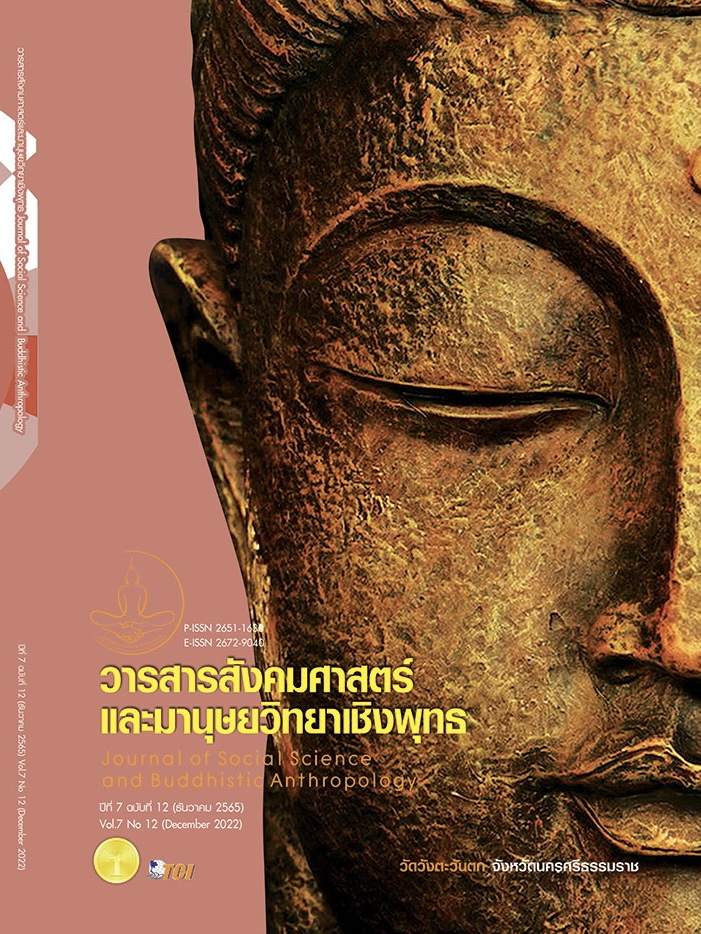THE DYNAMICS OF MODEL AND LAND USE UNDER INTENSIVE PRODUCTION: A CASE STUDY OF BAN MAE BUAN NUEA, DOI TAO DISTRICT, CHIANG MAI PROVINCE
Keywords:
Dynamic, Model of Land Use, Intensive Production, Ban Mae Buan Nuea, Chiang Mai ProvinceAbstract
The objectives of this research were: 1) to educate the model of historical land use changes from 2009 to present and 2) to determine the land use models of Ban Mae Buan Nuea in terms of physic, rights of land ownership, and a more commercial-intensive production. This was a mixed methods research by using questionnaires on 112 households or 73 % of the all households and using in-depth interviews of the 5 key informants. The study results found that 1) The model of historical land use changes between 2009 and 2012, the land was in use for cultivation of crops such as longan, maize, and chili without the use of chemicals. Later, in 2013 to 2015 chemicals were used, a pond was dug for water storage, and more houses were built. From 2016 to present, the farming model has fully entered the commercial agriculture. 2) The land use models, most of villagers had their own land for farming. In terms of land ownerships, most of villagers had title deeds or permits of the formal recognition of community usage rights in forest areas for 76 % of all lands. The cultivation area was 74% of all lands because the villagers had limited lands so rarely affected the village.There was no group of capitalists who bought or used the lands. However, there were government and private sectors that helped to provide knowledge about chemicals-free agriculture, the large amounts of chemicals and chemical fertilized were used for 74 % of all cultivation areas. Hence, it caused soil deterioration and the deteriorated quality of water. The solutions were to reduce the use of chemicals and to use organic matter. The government sector should formulate an agricultural extension policy. Knowledge and advices on the use of soil resources should be provided appropriately and maximum benefit.
References
กรมส่งเสริมการเกษตร. (2543). ไร่นาสวนผสม. กรุงเทพมหานคร: กลุ่มงานส่งเสริมจัดการฟาร์มกองส่งเสริมธุรกิจเกษตร กรมส่งเสริมการเกษตร.
ดรรชนี เอมพันธ์. (2531). หลักการใช้ที่ดินเบื้องต้น. กรุงเทพมหานคร: ภาควิชาอนุรักษ์วิทยา คณะวนศาสตร์ มหาวิทยาลัยเกษตรศาสตร์.
ปัญญา หิรัญรัศมี. (2539). เอกสารการสอนชุดวิชามนุษย์สัมพันธ์และจิตวิทยาที่เหมาะสมสำหรับเกษตร. นนทบุรี: มหาวิทยาลัยสุโขทัยธรรมาธิราช.
พิชิต สุทฺธิปภาโส. (2555). บ่ะใจ้วันนั้น ก่บ่มีวันนี้. กรุงเทพมหานคร: อารามเวฬุวันบรรพต.
วิชาภรณ์ พรหมณะ. (2550). การศึกษารูปแบบและวิธีการทำการเกษตรแบบผสมผสานของเกษตรกร กรณีศึกษา: บ้านหนองสร้อย ตำบลมะกอก อำเภอป่าซาง จังหวัดลำพูน. ใน วิทยานิพนธ์วิทยาศาสตรมหาบัณฑิต
สาขาการใช้ที่ดินและการจัดการทรัพยากรธรรมชาติอย่างยั่งยืน. มหาวิทยาลัยแม่โจ้.
ศักดิ์ชัย เอกอินทุมาศ และคณะ. (2557). ความยั่งยืนในการบริหารจัดการระบบที่ดินของกรมที่ดิน. อุบลราชธานี: คณะบริหารศาสตร์ มหาวิทยาลัยอุบลราชธานี.
สถิต วัชรกิตติ. (2521). ระบบการแบ่งแยกประเภทการใช้ประโยชน์ที่ดิน. กรุงเทพมหานคร: ภาควิชากาจัดการป่าไม้ คณะวนศาสตร์ มหาวิทยาลัยเกษตรศาสตร์.
สมเจตน์ จันทวัฒน์. (2526). การอนุรักษ์ดินและน้ำ เล่มที่ 2, หลักการอนุรักษ์ดินและน้ำ. กรุงเทพมหานคร: ภาควิชาปฐพีวิทยา คณะเกษตร มหาวิทยาลัยเกษตรศาสตร์.
สมพร สง่าวงศ์. (2552). พลวัตการใช้ประโยชน์ที่ดินในบริเวณเมืองเชียงใหม่ และการคาดการณ์ความเป็นเมืองในอนาคตด้วย SLEUTH Model. เชียงใหม่: ภาควืฃาภูมิศาสตร์ คณะสังคมศาสตร์ มหาวิทยาลัยเชียงใหม่.
อานัฐ ตันโช. (2550). เกษตรธรรมชาติประยุกต์. เชียงใหม่: คณะผลิตกรรมเกษตร มหาวิทยาแม่โจ้.
อุดมพงษ์ ตวงประยงค์. (2557). การใช้ที่ดินทางการเกษตร. เรียกใช้เมื่อ 27 ธันวาคม 2561 จาก http://www.agriinfo.doae.go.th/year60/general/land/land60.pdf
Downloads
Published
How to Cite
Issue
Section
License
Copyright (c) 2022 Journal of Social Science and Buddhistic Anthropology

This work is licensed under a Creative Commons Attribution-NonCommercial-NoDerivatives 4.0 International License.








